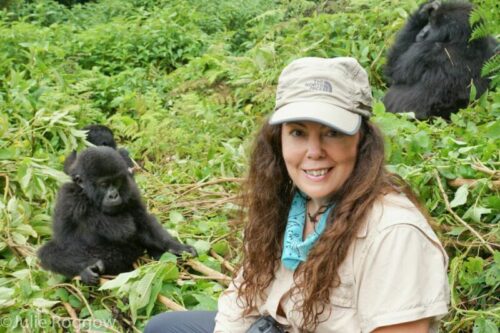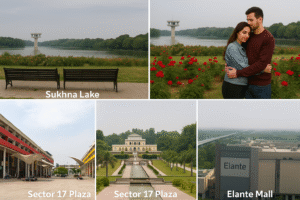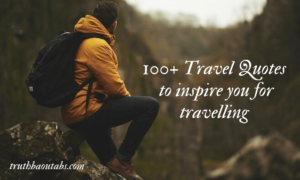A Traveler’s Guide To Gorilla Trekking In Uganda

Gorilla Trekking In Uganda
Bwindi Impenetrable Forest in Uganda is a famous natural habitat and home to Bwindi Impenetrable National Park. The forest, believed to be 25,000 years old, is one of Africa’s ancient landmarks, hosting many wildlife species. At Bwindi forest, you’ll have a spectacular view of native bird species, butterflies, and mammals such as elephants.
Of all the wild animals in the forest, mountain gorillas stand out as the most popularly viewed animal species. Bwindi is home to more than 400 mountain gorillas, the park’s main tourist attraction.
Throughout the year, visitors from all over the world visit the forest in southwestern Uganda to watch the mountain gorillas in an expedition popularly known as a Gorilla Trekking Tour.
So what makes a gorilla trekking tour? And what do you need for a successful gorilla trekking Uganda?
Read on for answers to these and more questions about the gorilla excursion.
Gorilla Trekking Tours In A Nutshell
Uganda has two famous gorilla trekking tours; a guided trekking excursion and a habituation experience.
The guided excursion is the most popular because it allows up to an hour with a human-habituated gorilla troop. The habituation experience, on the other hand, enables wildlife enthusiasts to spend at least four hours with a wild troop of gorillas, guided by rangers and wildlife researchers.
When Does The Excursion Start?
A typical gorilla trekking Uganda starts at a designated briefing point in the early morning. Usually, when you book a permit, a tour operator will help you get accommodation in a safari lodge near your designated briefing point in order catch up with the briefing at 7.30 am.
The briefing is an important phase of the excursion when park wardens highlight the safety precautions and basic rules to observe when interacting with the primates. Afterward, you’ll be split into groups of eight trekkers, backed by armed rangers and a tracker guide. Soon, you’ll set out for the long journey through the mountain ranges.
What To Expect During The Mountain Trekking
Mountain gorillas dwell in high altitude ranges between 8,000-13,000 feet above sea level. For this reason, trekking for a lovely experience with the primates is often tedious and physically challenging. You should prepare to walk on mountainous, steep, muddy slopes before getting a glimpse of the mountain apes.
The forest is also quite dense and characterized by impenetrable shrubs and vines. However, you shouldn’t worry, as the guide and the forest rangers will open up the path and use GPS coordinates to navigate the dense forest.
To reduce the strain of navigating the challenging terrain, you may hire a handyman (porter) to help you carry your backpack. Besides, the porter will hold your hand, push you up the steep slope, or sometimes carry you if you feel overwhelmed.
After about 30 minutes of trekking, you’ll likely spot the mountain apes foraging, grooming, and having a good time together in distinct families.
The forest rangers will help you find a suitable spot to watch and take photos of the gorilla troops. After the recommended time, your guide will safely lead you out of the park.
When Is The Best Time To Trek?
Depending on your schedule, Bwindi Park is open for trekking throughout the year. However, the dry seasons between January-February and June-September are the best days to trek. There will be no rain, and the paths leading to the forest won’t be muddy.
The downside of the dry season is that it is the peak season for most trekkers. As a result, getting a trekking permit and nearby accommodation may be challenging unless you make early reservations.
The Dressing Code and Essential Items to Carry On Your Trek
There’s no defined dress code for a gorilla tour. However, you should remember that you’ll trek on uneven terrain and in a dense forest. It is, therefore, advisable to wear shoes that will help you maintain stability and suitable clothes to keep you comfortable throughout the mountain trek.
Such apparel includes trekking boots, hiking gloves, long-sleeved shirts, trousers, and a hut.
Other essential items include;
- Packed lunch.
- Water.
- Rain jacket/umbrella.
- First aid kit.
- Disposable facemasks.
- Vaccination card (for yellow fever and covid 19).
- Tourist Visa.
- A fleece jacket for the cold.
- Waterproof backpack to carry your items.
- Camera and binoculars.
- Sunglasses.
- Insect repellant spray.
Safety Precautions
Human-habituated gorillas are relatively friendly and safe compared to wild gorillas. Primarily, their habituation takes 2-5 years, within which they are accustomed to human presence.
Despite this, wildlife researchers have formal rules to enhance the safety of the park’s trekkers, primates, and other wildlife.
The following safety precautions will come in handy during your mountain trek:
- Keep a minimum safe distance of 10 meters to avoid hostility and minimize the risk of disease transmission.
- Stay still or talk in a low tone when a gorilla approaches you.
- Gorillas may mistake direct human eye contact for hostility.
- Do not eat or drink near the gorillas.
- Wear a facemask and hand gloves when near the primates.
Where to Stay During Your Trek
Gorilla trekking is usually a day’s event since a habituation experience lasts about four hours. However, if you wish to explore the park further, you may opt to stay longer.
Many forest resorts with pristine jungle canopies oversee the rugged landscapes. A full board package in any resort includes accommodation and all meals throughout your stay in the jungle.
How Much Does A Gorilla Trekking Cost In Uganda?
Mountain trekking to watch the gorillas requires substantial financial investment to cater to park entry fees, accommodation, transport, and other associated costs.
Wildlife officials attributed the hefty cost to the huge finances spent on healthcare and security of the mountain apes. In addition, safari lodges within the park often transport fresh food supplies for long distances into the park using rugged mountainous paths.
In a nutshell, the cost of the trek includes the following;
- Trekking permits: $600-$700.
- Habituation permits: $1,500.
- Full board accommodation: $170-$1,500 per night.
- Park transport fees: $240-$350 per day.
- Domestic flights (return trips): $500-$700 per person.






